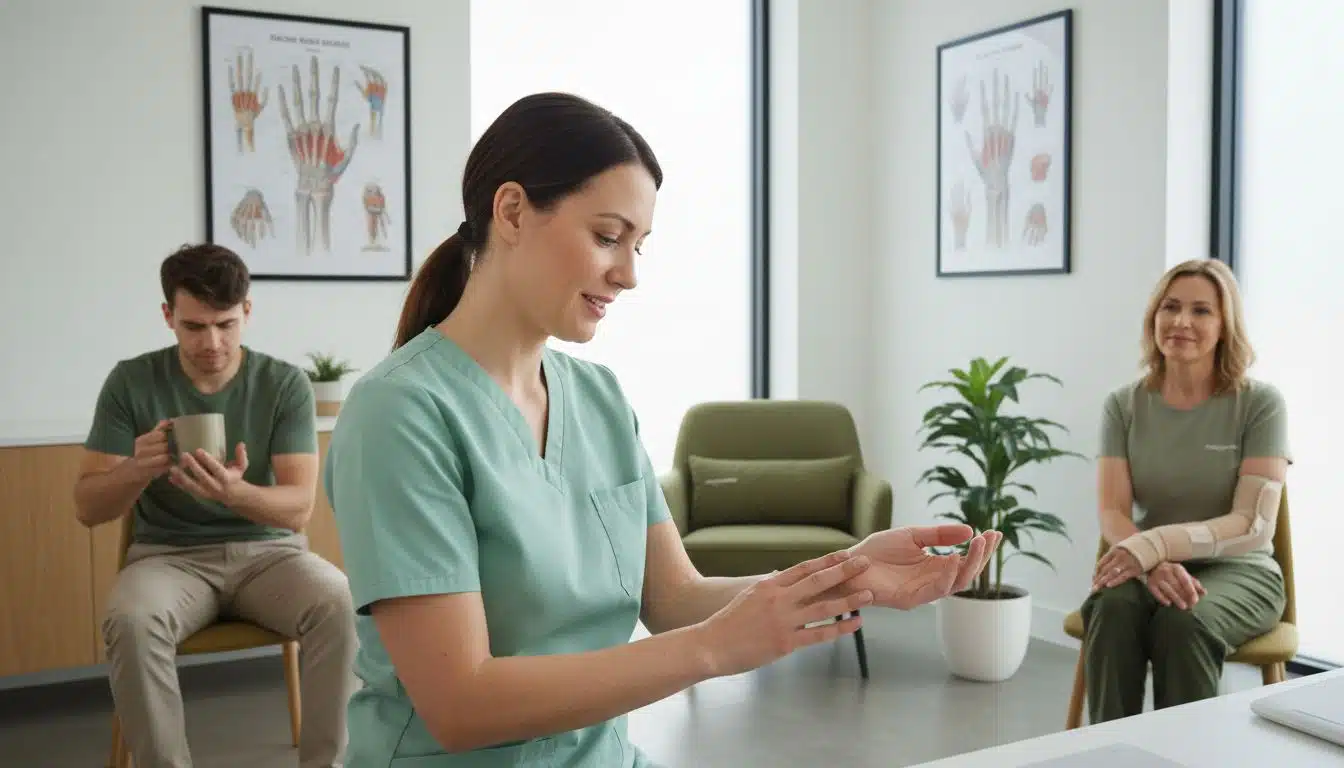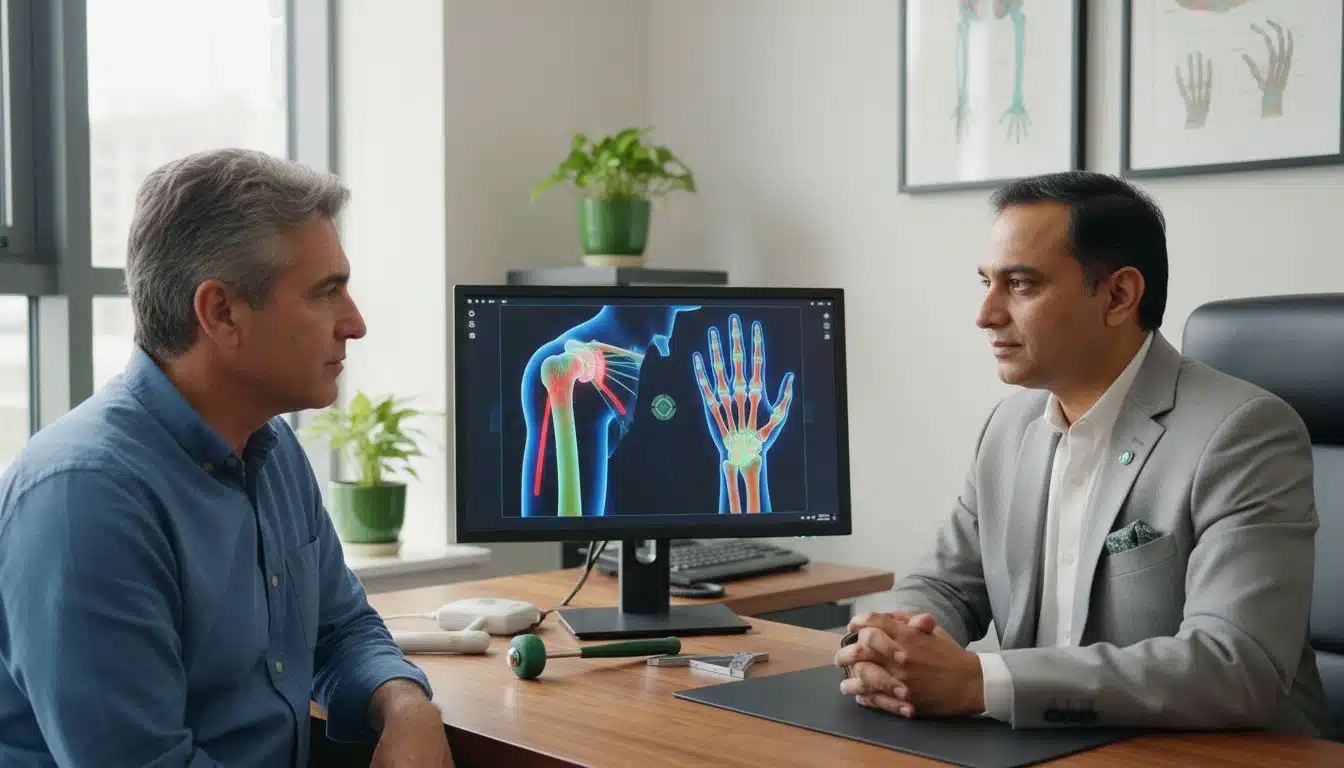Hand pain can disrupt even the simplest daily tasks, leaving many people searching for real relief that doesn’t require surgery. Studies show that up to 80 percent of patients report improvement after PRP therapy for hand conditions. This treatment uses your own blood to jumpstart healing deep within injured tissues, offering hope for those living with chronic discomfort. Understanding how PRP therapy works may open the door to a safer, more natural recovery.
Table of Contents
- What Is PRP Therapy for Hands?
- Conditions Treated With PRP for Hands
- How PRP Treatment for Hands Works
- Expected Results and Typical Timeline
- Risks, Costs, and Alternatives to PRP
Key Takeaways
| Point | Details |
|---|---|
| Innovative Treatment | PRP therapy uses a patient’s own blood to accelerate healing in hand and upper extremity conditions. |
| Conditions Addressed | It effectively treats chronic tendonitis, ligament injuries, osteoarthritis, and repetitive strain injuries. |
| Minimally Invasive Procedure | The treatment involves blood collection, centrifugation, and targeted injection of concentrated platelets. |
| Realistic Expectations | Patients may experience initial soreness, with gradual improvement seen over weeks to months following treatment. |
What Is PRP Therapy for Hands?
Platelet-rich plasma (PRP) therapy represents an innovative regenerative medical treatment specifically designed to accelerate healing for hand and upper extremity conditions. According to Mercy, this advanced procedure involves drawing a patient’s own blood, processing it to concentrate platelets, and strategically injecting the concentrated plasma back into damaged hand tissues.
The core mechanism of PRP therapy works through biological amplification. As Wikipedia explains, PRP is a concentrated protein derived from whole blood that retains powerful platelets after centrifugation. These concentrated platelets contain growth factors that stimulate tissue repair, reduce inflammation, and potentially accelerate healing for various hand conditions.
PRP therapy can address multiple hand-related issues, including:
- Tendon injuries
- Ligament sprains
- Chronic hand pain
- Arthritis symptoms
- Soft tissue damage
- Repetitive strain injuries
For Austin patients experiencing persistent hand discomfort, PRP Therapy at Hand to Shoulder Center offers a cutting-edge, minimally invasive alternative to traditional surgical interventions. By leveraging the body’s natural healing mechanisms, Dr. Manish V. Patel provides personalized regenerative treatment strategies tailored to each patient’s unique orthopedic needs.
Conditions Treated With PRP for Hands
PRP therapy offers a promising treatment approach for numerous hand-related conditions, providing hope for patients struggling with chronic pain and limited mobility. Mercy highlights several common hand conditions that can benefit from PRP injections, including tendonitis, tennis elbow, osteoarthritis, and carpal tunnel syndrome.
Specifically, PRP therapy demonstrates remarkable potential in addressing the following hand and upper extremity conditions:
Here’s a summary of common hand conditions treated with PRP therapy:
| Condition | Description | Typical Symptoms |
|---|---|---|
| Chronic Tendonitis | Inflammation of hand or wrist tendons | Pain, swelling, stiffness |
| Ligament Injuries | Partial tears or chronic sprains | Instability, pain |
| Osteoarthritis | Degenerative joint disease | Joint pain, reduced motion |
| Repetitive Strain Injuries | Overuse conditions like carpal tunnel | Numbness, tingling, pain |
| Post-surgical Rehabilitation | Healing support after hand procedures | Soreness, limited mobility |
- Chronic Tendonitis: Inflammation of tendons in the hand and wrist
- Ligament Injuries: Partial tears and chronic sprains
- Osteoarthritis: Degenerative joint conditions affecting hand mobility
- Repetitive Strain Injuries: Conditions like carpal tunnel syndrome
- Post-surgical Rehabilitation: Accelerating healing after hand procedures
For Austin patients seeking specialized treatment, Hand Conditions Explained provides deeper insights into the complexities of hand injuries. Dr. Manish V. Patel’s approach goes beyond traditional treatments, utilizing PRP therapy to target the root cause of hand conditions and promote natural healing mechanisms.
What sets PRP therapy apart is its regenerative approach. Unlike traditional treatments that merely manage symptoms, this innovative technique harnesses the body’s own healing potential. By concentrating platelets and growth factors directly into the affected area, PRP therapy stimulates tissue repair, reduces inflammation, and potentially restores function in ways conventional treatments cannot. Patients experiencing persistent hand pain or limited mobility can find a promising alternative through this cutting-edge regenerative medicine technique.
How PRP Treatment for Hands Works
The PRP treatment process is a sophisticated regenerative medical technique that transforms a patient’s own blood into a powerful healing solution. Mercy explains the precise procedure involves drawing the patient’s blood, processing it to concentrate platelets, and injecting the PRP into the hand using ultrasound guidance to ensure precise delivery.
The treatment unfolds through a carefully orchestrated series of steps:
- Blood Collection: A small blood sample is drawn from the patient
- Centrifugation: Blood is spun in a specialized centrifuge to separate components
- Platelet Concentration: Platelets are isolated and concentrated
- Precise Injection: PRP is strategically injected into targeted hand tissues
Technical nuances make PRP therapy unique. The concentrated platelets contain powerful growth factors that trigger natural healing responses. When introduced into damaged hand tissues, these growth factors stimulate cellular repair, reduce inflammation, and potentially regenerate tissue in ways traditional treatments cannot. PRP Therapy Articles provide deeper insights into the scientific mechanisms behind this innovative approach.
Dr. Manish V. Patel’s approach goes beyond standard treatments. By leveraging advanced ultrasound guidance, he ensures maximum precision during PRP injections.
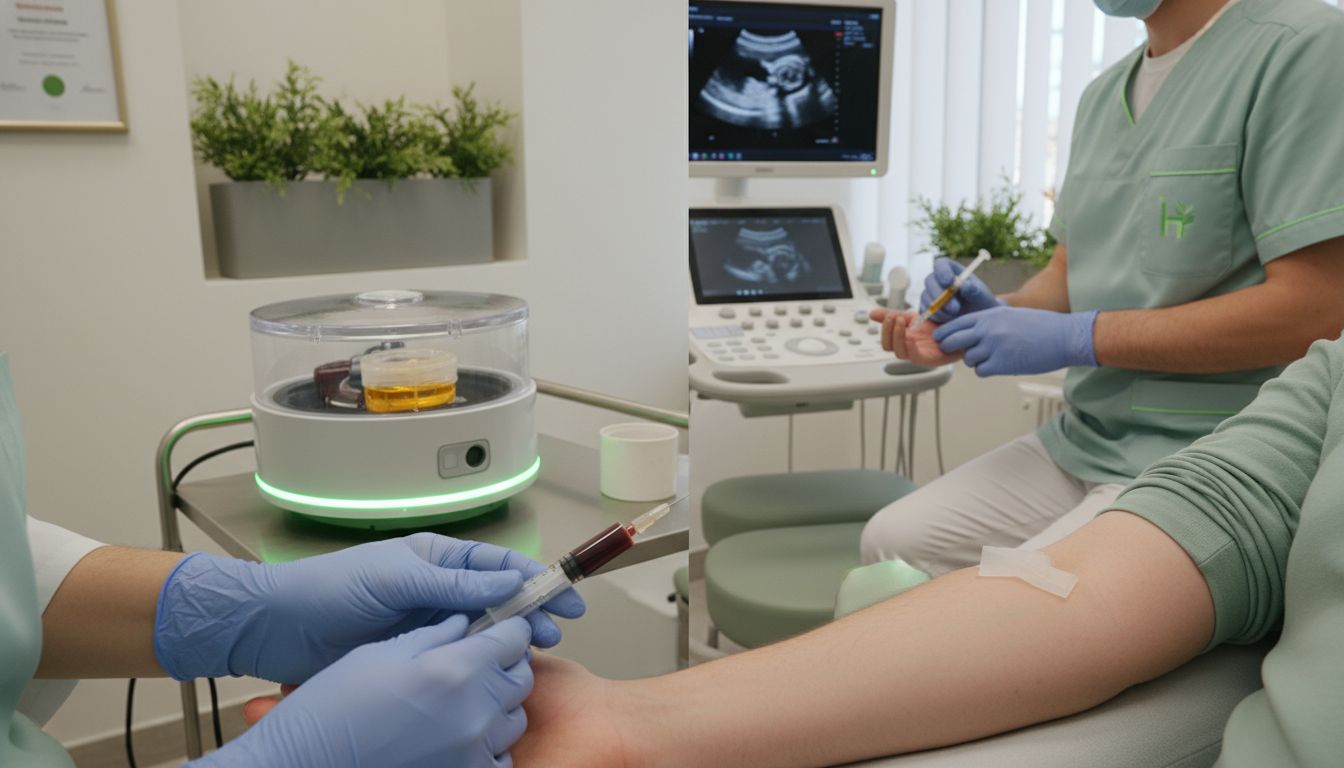 This technique allows for targeted treatment of specific hand regions, minimizing invasiveness while maximizing potential healing outcomes. Patients can expect a relatively quick outpatient procedure with minimal downtime, making PRP therapy an attractive alternative to more extensive surgical interventions.
This technique allows for targeted treatment of specific hand regions, minimizing invasiveness while maximizing potential healing outcomes. Patients can expect a relatively quick outpatient procedure with minimal downtime, making PRP therapy an attractive alternative to more extensive surgical interventions.
Expected Results and Typical Timeline
PRP therapy offers patients a progressive healing journey with carefully managed expectations. Mercy highlights that patients may initially experience soreness, with gradual improvement developing over several weeks, supported by an impressive 80% success rate reported by medical professionals.
Typical PRP treatment recovery and results can be broken down into distinct phases:
- Initial Days (0-3 Days): Mild discomfort and localized inflammation
- First Week (4-7 Days): Reduction in acute pain
- 2-4 Weeks: Noticeable healing and tissue regeneration begins
- 4-12 Weeks: Significant improvement in mobility and reduced pain
- 3-6 Months: Potential maximum healing and functional restoration
Understanding Hand Tendon Repair provides additional context for patients seeking comprehensive insights into the healing process. Dr. Manish V. Patel emphasizes that individual results can vary based on the specific condition, patient health, and the extent of tissue damage.
Patients should maintain realistic expectations and understand that PRP is a regenerative process, not an instant fix. While some individuals experience rapid improvement, others may require multiple treatments to achieve optimal results. Regular follow-up appointments with Dr. Patel allow for personalized tracking of healing progress, ensuring the most effective treatment strategy for each unique patient’s hand condition.
Risks, Costs, and Alternatives to PRP
PRP therapy offers a promising treatment approach with minimal risks, making it an attractive option for patients seeking non-surgical interventions. Mercy confirms the treatment is generally safe, with patients potentially experiencing only mild soreness during the initial recovery period.
Potential risks and considerations include:
- Minor Discomfort: Temporary soreness at injection site
- Slight Bruising: Minor localized bruising possible
- Infection Risk: Minimal, but present with any injection procedure
- Variable Response: Individual healing rates may differ
Alternative treatment options for hand conditions vary in approach and effectiveness: Arthritis Treatment Options Guide provides additional context for patients exploring different therapeutic strategies. University of Applied Orthopedics highlights several alternatives, including:
- Corticosteroid injections
- Physical therapy
- Traditional surgical interventions
- Conventional pain management techniques
Dr. Manish V. Patel emphasizes that while alternative treatments exist, PRP therapy offers a unique regenerative approach. The cost of PRP treatment can vary depending on the specific condition, number of injections required, and individual patient needs. Most patients find the investment worthwhile, given the potential for long-term healing and reduced reliance on more invasive treatments. A personalized consultation can provide the most accurate assessment of potential costs and expected outcomes for your specific hand condition.
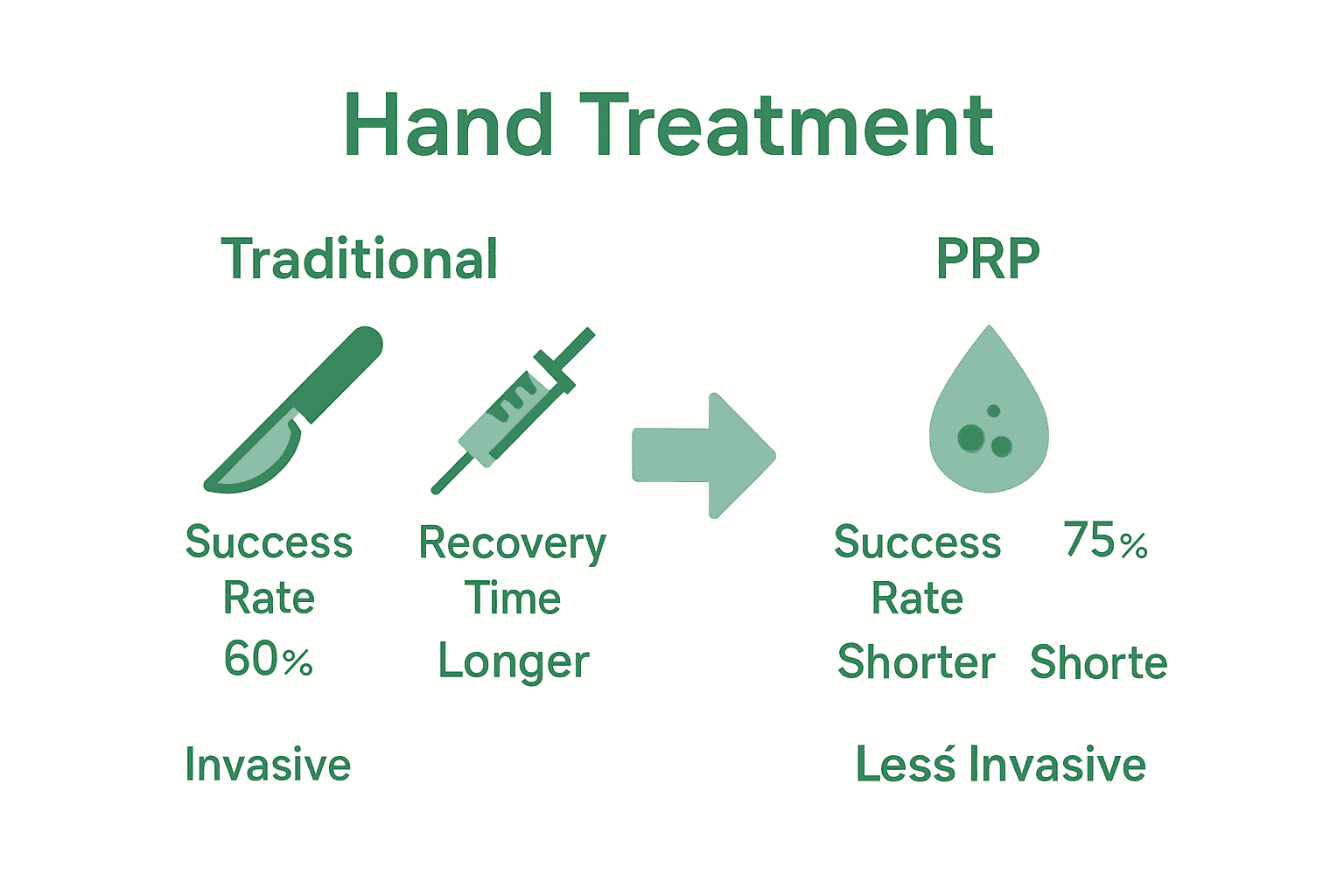
Discover Lasting Relief for Your Hand Pain with Expert PRP Therapy
If you are struggling with chronic hand pain caused by conditions such as tendonitis, arthritis, or repetitive strain injuries, understanding how PRP therapy can stimulate your body’s natural healing offers new hope. This advanced treatment targets the root cause of your discomfort with concentrated growth factors, which can reduce inflammation and promote tissue repair. Explore more about how these innovative regenerative techniques provide real results in our PRP Therapy Articles | Regenerative Medicine Austin Blog to learn how personalized care can transform your recovery.
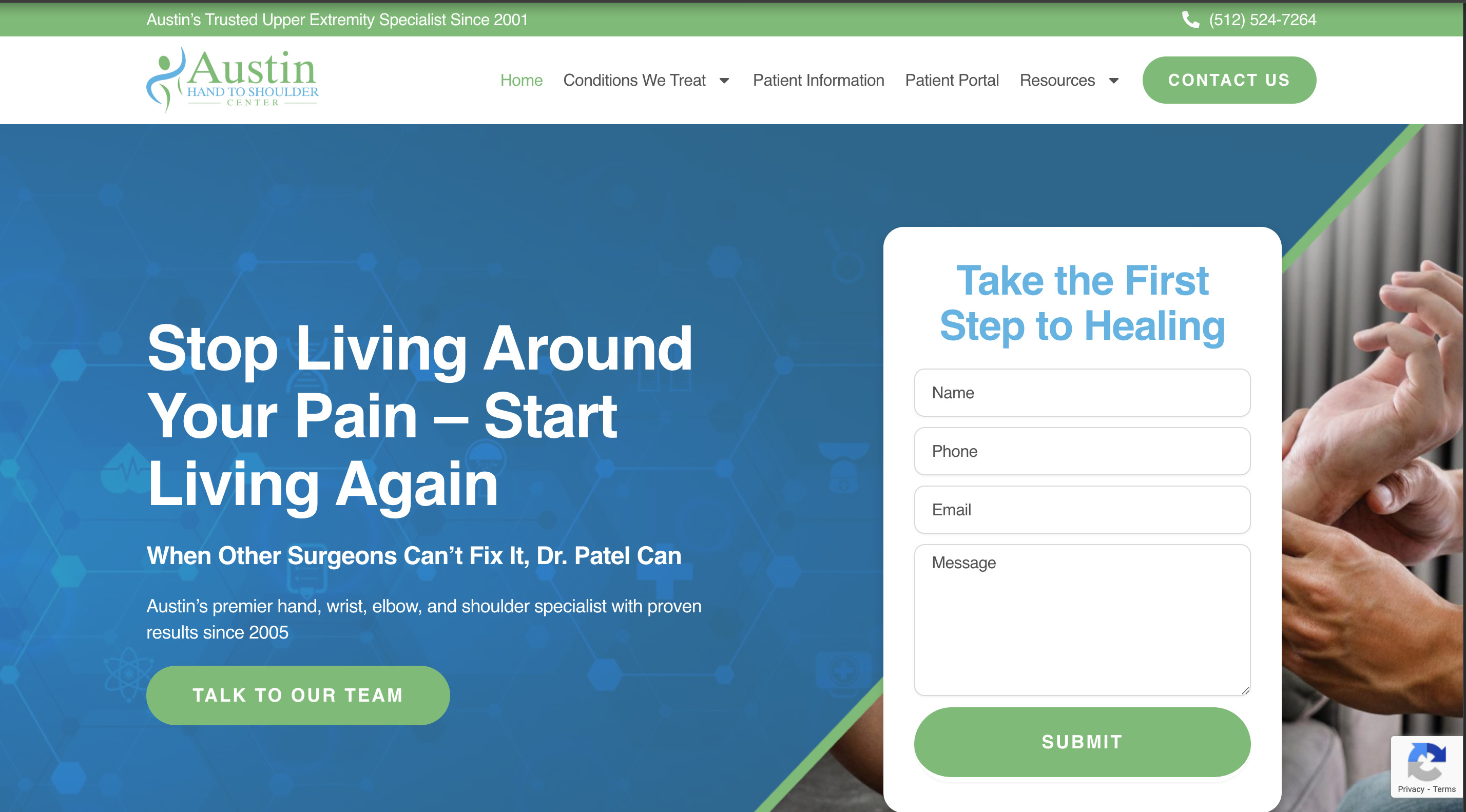
Take control of your hand health today by consulting with Dr. Manish V. Patel, a fellowship-trained, board-certified surgeon offering specialized treatments at Austin’s trusted center. Whether your pain comes from arthritis, injury, or overuse, our patient-focused approach creates tailored plans proven to improve function and reduce discomfort. Don’t wait for symptoms to worsen. Visit us at Austin Hand To Shoulder Center or explore additional insights in Arthritis Treatment & Insights | Austin Hand To Shoulder Center and Hand Pain, Procedures & Treatment Articles | Austin Orthopedics to begin your healing journey with confidence.
Frequently Asked Questions
What is PRP therapy for hands?
PRP therapy for hands is a regenerative medical treatment that uses a patient’s own concentrated platelets to promote healing in damaged hand tissues. It involves drawing blood, processing it to concentrate platelets, and injecting the PRP into the affected areas.
What conditions can PRP therapy help with?
PRP therapy can address various hand conditions such as tendon injuries, ligament sprains, chronic hand pain, arthritis, soft tissue damage, and repetitive strain injuries like carpal tunnel syndrome.
How does the PRP treatment process work?
The PRP treatment process involves collecting a small blood sample, centrifuging it to isolate platelets, and then injecting the concentrated plasma into the targeted hand tissues. This is typically done under ultrasound guidance for precision.
What can I expect in terms of results and recovery after PRP therapy?
Patients may experience mild discomfort initially, with gradual improvement over a few weeks. Many report significant pain reduction and increased mobility within a 4 to 12-week period, depending on individual healing rates and the specific condition treated.



